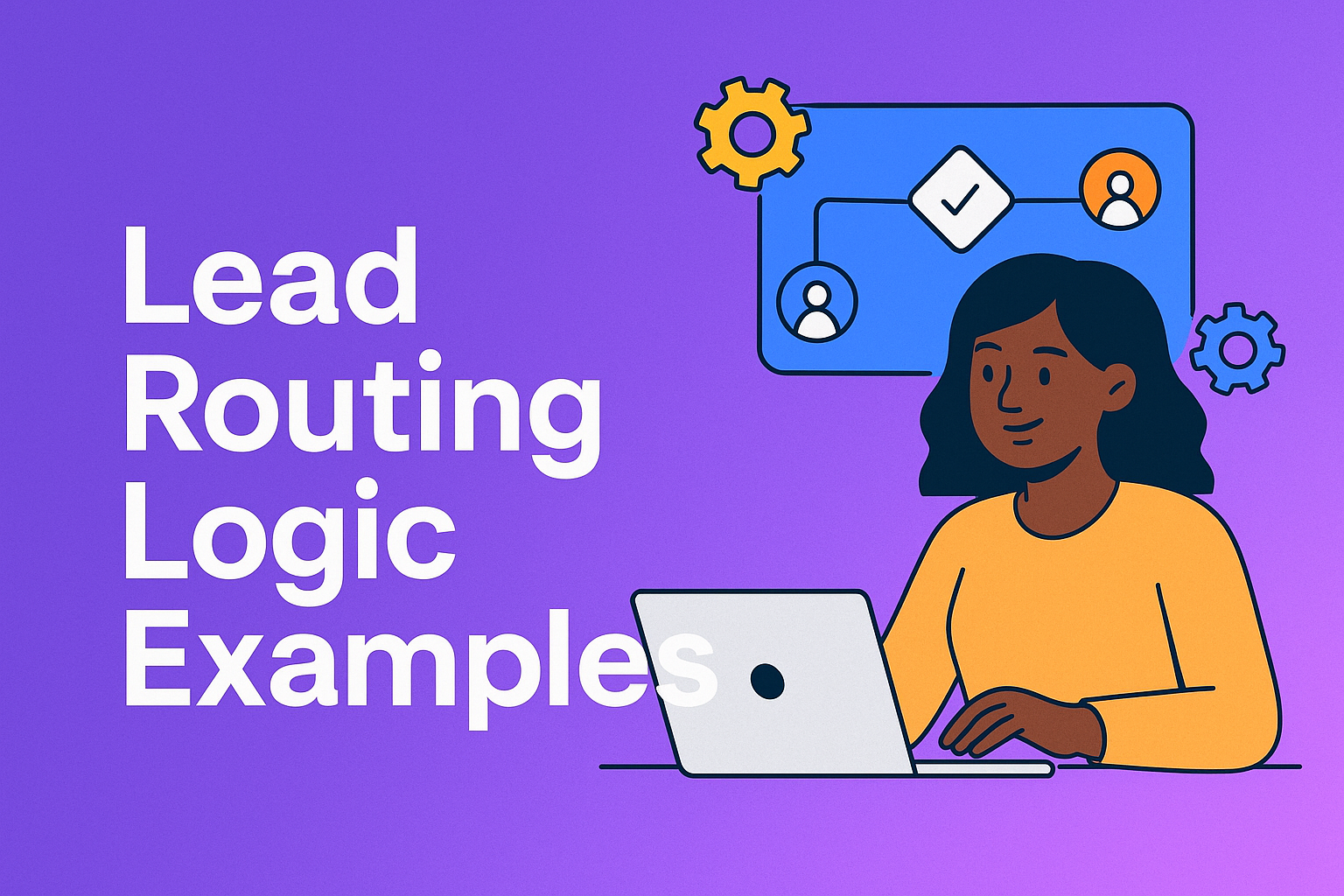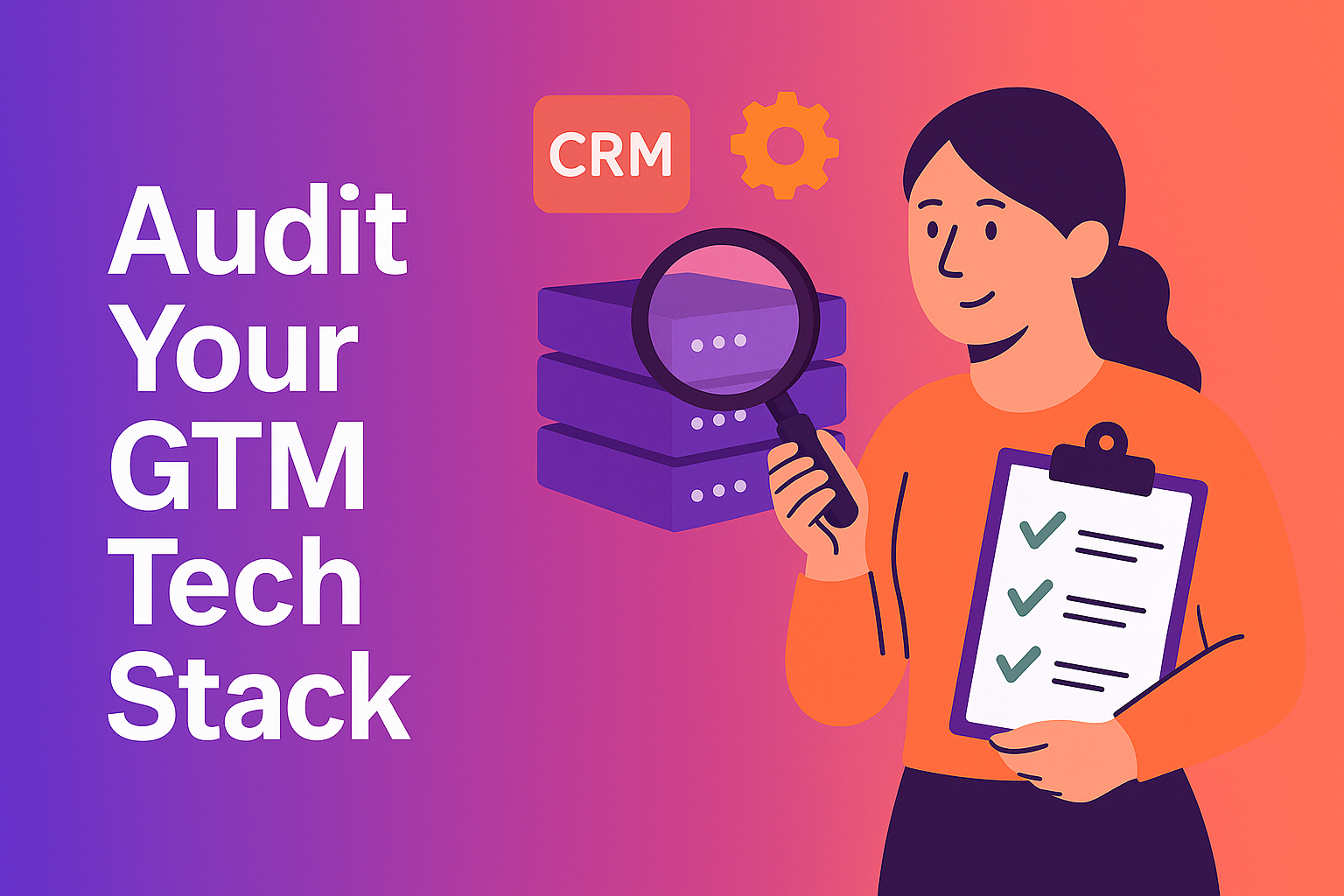Lead Routing Logic Examples for High-Growth Sales Teams
They say timing is everything. A prospect who fills out your form is raising their hand in that exact moment. If your routing system takes hours—or even minutes—to get them to the right rep, you’ve lost momentum. The buyer has already moved on to another task, another vendor, or another solution.
This is why high-growth sales teams obsess over their lead routing logic. It’s not just about sending a name to a rep in your CRM. It’s about orchestrating the entire experience: who gets the lead, how quickly the rep responds, how easy it is for the buyer to book time, and how consistently the process scales as lead volume grows.
Done right, intelligent lead routing removes friction, accelerates speed-to-pipeline, and ensures your best reps are always in front of the right buyers. Done poorly, it creates a leaky funnel where valuable leads slip away unnoticed.
Why lead routing matters more than ever
Lead routing is the invisible engine behind pipeline creation. For high-growth teams, the stakes are even higher because they rely on volume, velocity, and consistency to hit ambitious targets.
When routing works, the impact is immediate:
- Faster follow-up: Prospects hear from you in minutes, not hours.
- Higher conversion: Reps talk to the right people at the right time, which increases demo-to-close rates.
- Better buyer experience: Prospects feel prioritized instead of ignored.
- Less admin: Reps spend time selling, not untangling ownership disputes or chasing leads lost in the CRM.
And the numbers back it up. Research from InsideSales found that responding to a lead within five minutes increases the chance of conversion by 100x compared to waiting 30 minutes. Add to that data from companies running AI-powered routing, which shows a 25% boost in conversion rates, and the business case becomes impossible to ignore.
For growth-stage companies especially, lead routing isn’t just an operational detail—it’s a competitive edge.
The building blocks of strong routing logic
High-performing sales teams don’t leave routing to chance. They design rules and systems that reflect how their business actually operates. At a minimum, this means:
- Speed: Leads are assigned in real time, not after enrichment or manual review.
- Fit: Prospects go to the rep best equipped to handle them, based on account ownership, territory, or product knowledge.
- Context: Reps have enough information to personalize their outreach right away.
- Scalability: The system can handle spikes in lead volume without bottlenecks.
Routing isn’t just about automation—it’s about aligning sales capacity, expertise, and buyer expectations in one smooth motion.
Examples of effective lead routing logic
Here are the most common and effective routing strategies used by high-growth sales teams, along with how they work in practice.
1. Instant lead distribution
The gold standard in routing is immediacy. As soon as a lead submits a form, the system evaluates predefined rules and assigns them instantly.
Rules can include:
- Territory: Route based on geography, time zone, or region.
- Account ownership: If the account already belongs to a rep, route the new lead back to them.
- Product line: Assign based on which solution the prospect showed interest in.
- Company size or segment: Match enterprise reps with enterprise accounts and SMB reps with smaller deals.
Instant distribution ensures no lead sits idle. The prospect sees immediate engagement, and the rep knows exactly who owns the lead without debate or delay.
2. Smart meeting scheduling
Routing logic doesn’t stop at assignment—it should also handle scheduling. A prospect who just submitted a demo request is at peak intent. Sending them to a generic thank-you page and promising someone will “be in touch soon” kills momentum.
Instead, embed scheduling directly after the form submit:
- Show the prospect the calendar of the assigned rep.
- Let them pick a time instantly.
- Trigger confirmation and reminders automatically.
This turns what used to be a 2–3 day delay into a meeting booked within minutes of form submission. It keeps energy high and drastically improves show rates.
3. Context-rich notifications
Speed is useless if reps don’t know how to personalize their outreach. Routing logic should include notifications that give reps everything they need in one view:
- The form data submitted.
- Recent web activity (pages visited, content downloaded).
- Any history with the account (past opportunities, open support tickets).
Delivered via Slack, email, or CRM alerts, this context equips the rep to reach out with relevance. Instead of a generic “Saw you signed up for a demo—when works for you?” they can open with something tailored to the buyer’s exact interest.
4. Account-based routing
For teams running ABM motions, account-based routing ensures that all leads from a target account go to the account owner. This prevents the nightmare scenario where multiple reps are reaching out to the same company with different messages.
With account-based routing in place:
- Every lead from a target account is tied back to the same AE.
- The rep sees all inbound interest in one place.
- Messaging stays consistent, building credibility with the buyer.
5. Role-based handoffs
In SaaS, it’s common for SDRs to handle initial qualification and AEs to run demos. Routing logic should handle this handoff automatically:
- If an SDR books the first meeting, the system routes the account to the AE for all future interactions.
- Notifications ensure the AE has full context from the SDR’s notes.
- The buyer never feels like they’re starting over.
This creates a smooth transition and reduces the risk of miscommunication.
6. Fallback rules
Even the best routing logic needs a safety net. What happens if the assigned rep is on vacation? Or if no one is available in the buyer’s time zone?
Fallback rules keep the system from breaking:
- Route to a backup pool of reps.
- Offer asynchronous options like on-demand demos or pre-recorded videos.
- Auto-disqualify leads outside your ICP before they ever hit a rep’s inbox.
With fallback logic in place, no lead ever falls into a black hole.
Using data to refine routing
Great routing logic is never static. High-growth teams treat it as a living system, constantly improving based on data and feedback.
Analyze what the numbers say
Analytics should answer questions like:
- Which routing rules are producing the fastest follow-up times?
- Where do drop-offs happen most often?
- Which reps convert routed leads most effectively?
These insights let you refine rules, redistribute territories, or change criteria to keep performance high.
Build feedback loops with sales
Data tells you what happened, but reps can tell you why. Creating regular check-ins where reps share feedback on lead quality, mismatches, or bottlenecks uncovers blind spots dashboards might miss.
When marketing and sales collaborate on routing logic, the system becomes smarter and more aligned with the real buyer journey.
Putting it all together
Lead routing may not sound glamorous, but it’s one of the most important levers for growth. The difference between a lead waiting hours for a follow-up and a lead instantly routed to the right rep is the difference between missed revenue and booked pipeline.
High-growth teams win by combining multiple strategies: instant assignment, embedded scheduling, context-rich notifications, account-based routing, role-based handoffs, and robust fallback rules. Then they use data and rep feedback to keep refining the system.
The result is a process where every buyer gets the right response at the right time, and every rep knows exactly what to do next.
Final thoughts
Optimizing lead routing logic isn’t just about efficiency—it’s about creating a better buyer experience and fueling sustainable growth.
When you eliminate delays, remove friction, and design logic that matches how your sales team actually operates, you set yourself apart from competitors still relying on manual workflows or outdated CRM rules.
The message is simple: stop leaving leads to chance. Build a routing system that captures every opportunity, adapts as you scale, and gives both your buyers and your reps what they need to succeed.
Let RevenueHero help your team turn high-intent users into booked meeting without slowing down your funnel.













